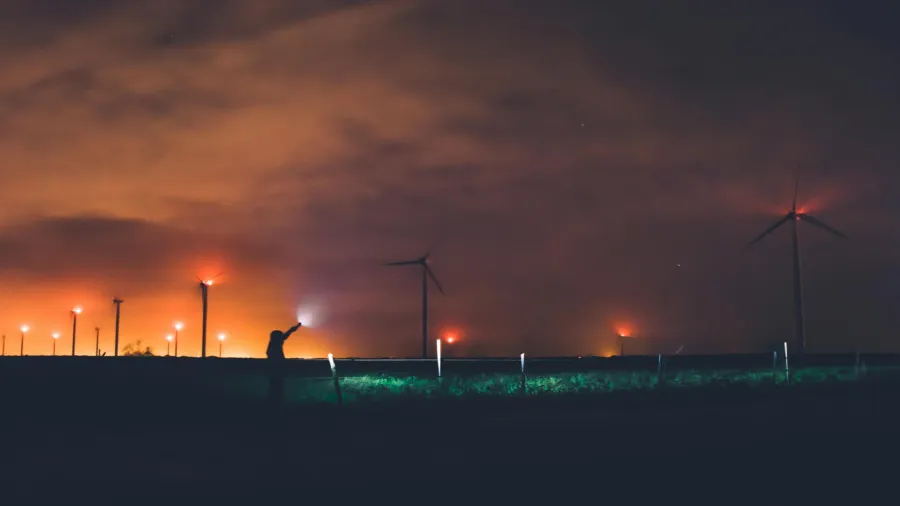
Indonesia must overcome regulatory barriers to build RE appeal
It needs $285b to boost its clean energy capacity and hit climate targets by 2030.
Indonesia must get rid of regulatory roadblocks including onerous contractual requirements for solar and wind power, and offer attractive incentives to erase its image as a pariah in Southeast Asia’s lucrative RE sector, energy analysts said.
“Considering the enormous investment needed to [achieve] its energy potential, the government has to collaborate with the private sector, especially in project funding,” Mutya Yustika, an energy finance specialist at the Institute for Energy Economics and Financial Analysis (IEEFA), told Asian Power.
“To meet its 2030 climate commitment, Indonesia needs around $285b, and private investment will be vital to fill the $146b investment gap,” she added.
Despite abundant and untapped renewable energy sources and strong economic growth, renewable energy investment in Southeast Asia’s most populous nation has stagnated for the past seven years.
Last year, it only attracted $1.5b, equivalent to a paltry 574 megawatts (MW) of additional capacity, the IEEFA said in a report written by Yustika in June.
It lags its Southeast Asian neighbours that have installed much more significant solar and wind capacity. Vietnam, for example, has 13,035 MW of solar capacity and 6,466 MW of wind generation, Yustika said in the report.
A mandatory partner system, ownership transfer limits, an unfavourable deliver-or-pay scheme and unattractive tariff ceilings all add up to keep it in the RE rut. Stringent local content requirements, the lack of carbon credit incentives, and complicated procurement procedures also raise costs and discourage private investment.
Dinita Setyawati, a senior electricity policy analyst for South East Asia at energy think tank Ember, said the government should offer better incentives, apart from clarifying its RE targets.
Doing so means investors can make informed decisions, confident that they will make this much once they enter the Indonesian market, she said. “Both governments and investors can work together to help Indonesia reach its full renewable energy potential.”
The government is set to submit its renewable energy goals for 2030 and 2035, and Setyawati said Indonesia’ clean energy sector might progress more slowly than anticipated. It is widely expected to cut its target to 17%-19% from 23% for 2025 and to 19%-21% from 26% for 2030.
Yustika noted that Indonesia increased its power capacity by 21 gigawatts (GW) from 2018 to 2023 — 18.4GW from fossil fuels and 3.2GW from renewable energy.
“Despite having 3,294 GW of solar potential, Indonesia only added 574 MW solar power to the grid, a mere 0.017% of its potential,” she said. “This means Indonesia has the lowest rate of solar use in the Asia-Pacific region and is also among the lowest globally.”
The country generated only 154 MW of wind power from a possible 155 GW, or 0.1% of its total potential, she added.
Lack of transparency
Setyawati said Indonesia’s clean energy potential is mostly concentrated in the countryside, but demand is mostly in Java, leading to grid infrastructure constraints.
Yustika in her report said state-owned PT Perusahaan Listrik Negara (PLN) and its units are in the driving seat of RE development through a mandatory partner and 51% majority shareholders’ scheme.
“This equity co-ownership discourages private investors as PLN becomes the de facto owner of any project,” she said. “As the sole off-taker of any renewable energy generated, PLN’s dual role of equity shareholder and off-taker creates a conflict of interest.”
The state also limits the private sector's ability to obtain additional capital and technical expertise during project delivery, whilst penalising a contractor if an independent power producer (IPP) fails to meet electricity requirements.
Meanwhile, it is difficult for investors to hit profit targets and auctions for new projects become unappealing given the too low tariff ceilings for IPPs, Yustika said.
The government should do away with these restrictions to make return on investment more appealing and fast-track the country’s transition to renewable energy, Yustika said.
She also cited the lack of transparency in PLN’s procurement of renewable energy projects. IPPs that want to join the procurement process must pre-register, and the application process can take weeks up to a year.
Setyawati said Indonesia should increase the budget for its energy transition so it could fund the reskilling of workers affected by the shift. It should also expand the power grid and involve local governments in energy decisions to boost their economies.
The state should harness solar and wind power instead of focusing on complex, long-term, and large-scale hydropower or geothermal energy projects, she said. One way to do this is by rolling out more rooftop solar, which can be installed quickly at a lower cost.
“It is difficult to confidently say that Indonesia will achieve its 2030 RE mix target,” Yustika said. “As an equatorial archipelago of more than 17,000 islands, Indonesia should utilise the country’s vast solar and wind resources for electricity, especially in remote areas.”



















 Advertise
Advertise






